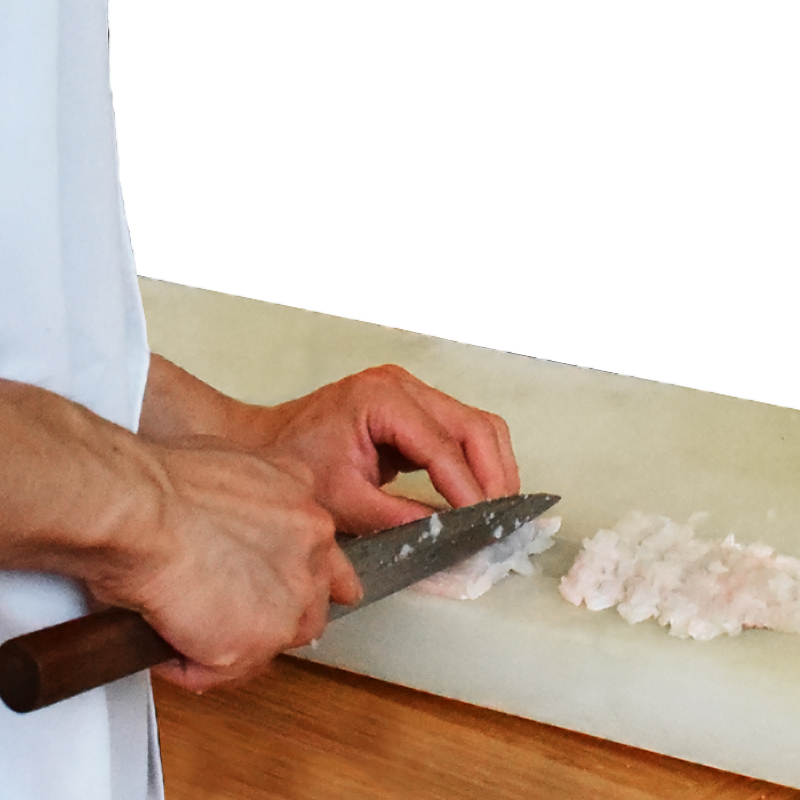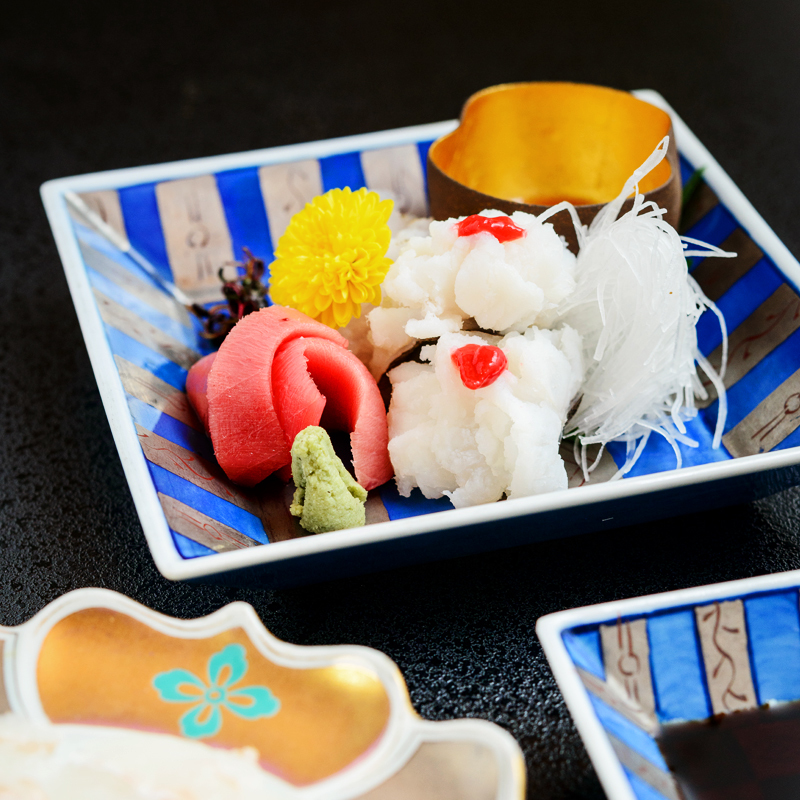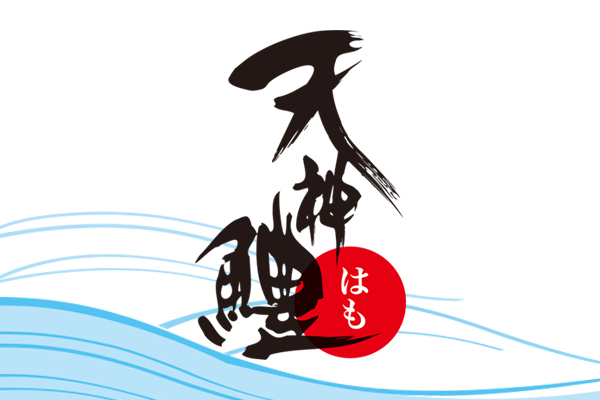Hofu gives a new lease of life to a traditional Kyoto delicacy
Hamo Daggertooth Pike Conger Eel
Hofu gives a new lease of life to a traditional Kyoto delicacy
The daggertooth pike conger (hamo) is a species of eel that grows up to two meters long. An aggressive animal with a pointed head, large mouth, and sharp teeth, it lives close to shore and is found in large numbers in the nutrient-rich waters at either end of the Inland Sea. Yamaguchi ranks in the top five places in Japan for its hamo catch, with Hofu having the biggest catch in the prefecture.
Traditionally, however, most of the hamo caught in Yamaguchi were sent to Kyoto, where the fish was prized by the aristocracy. Even today, hamo remains a must-have dish during Kyoto’s Gion Festival in August. It is prized for its rich umami and for being fattier than fugu (pufferfish) without being oily.
An old favorite. A new start.
In the early 2000s, the city of Hofu decided to stake a claim to its native fish and develop hamo into a local specialty to attract foodie pilgrims. The Tenjin-hamo brand was created and twelve local restaurants formed the Hamo-juku School to study techniques for cutting the fish—which has 1,200 bones!—and develop tasty new recipes.
Proximity to the sea means that hamo from Hofu is unusually fresh. Collaboration among restaurants, meanwhile, guarantees an unusual level of skill, creativity, and innovation among local cooks. Recent Hamo-juku initiatives include the application of nose-to-tail principles to hamo so that every part—from the swim bladder to the liver—can be eaten.
Hamo has now established itself on Japan’s gourmet map. People come to Hofu not just to see Hofu Tenmangu Shrine and visit the historic residences of the Mohri clan, but also to feast like lords on delicious eel.
TENJIN-HAMO EEL QUICK FACTS
- Hamo has 1,200 bones. As a result, it’s very hard to prepare.
- Hamo is so difficult to prepare that Hofu fishmongers used to give it away for free.
- Hamo was a popular seasonal delicacy with the Kyoto aristocracy.
- Hamo season is from mid-May to mid-September—precisely when fugu is not available.
- Hamo in Hofu is far less expensive than in Kyoto—and fresher too.
Hamo Daggertooth Pike Conger Eel
A fish that’s as difficult to prepare as it’s delicious to eat
A Technical Challenge
The daggertooth pike conger eel, or hamo, has an astonishing 1,200 bones. Despite being a seasonal delicacy for Kyoto aristocrats, hamo was seldom eaten by ordinary families because few people had the know-how or equipment to cook it for themselves. To prepare hamo, you first need an unusually large, heavy, and expensive knife. This special knife is around thirty centimeters long, six centimeters wide, and made of two kinds of steel. You must then cut the bones with extreme precision, making eight cuts per centimeter to crush the bones and render them edible. Since the hamo season lasts only five months a year, practice time is limited and mastering the technique takes five years or more. Even the most expert cook needs around 15 minutes to cut the bones and prepare a single daggertooth pike conger eel.

Photo:Honegiri
The Full Monty
During hamo season from Mid-May to mid-September, restaurants in Hofu serve a full-course hamo meal with ten courses, eight of which feature hamo. During this meal, each guest will consume an entire fish. Hamo shabu-shabu, when you briefly swirl the fish in a pot of simmering water to cook it, offers a wonderful contrast of textures—soft white flesh, chewy collagen-rich skin, and crisp vegetables as well. It is also a feast for the eye, with the flesh swirling and swelling like a many-petalled peony as it cooks.

Photo:Hamo shabu-shabu
True gourmets will also appreciate hamo sashimi, a very labor-intensive dish. To make it possible to eat hamo raw, the cook has to make a series of diagonal cuts into the body and extract the bones with pincers. The restaurants in Hofu have also worked together to develop unique regional recipes such as fried nanban-marinated hamo, hamo swim bladder, and raw hamo


翻訳について
この解説文は観光庁の地域観光資源の多言語解説整備支援事業で作成しました。
